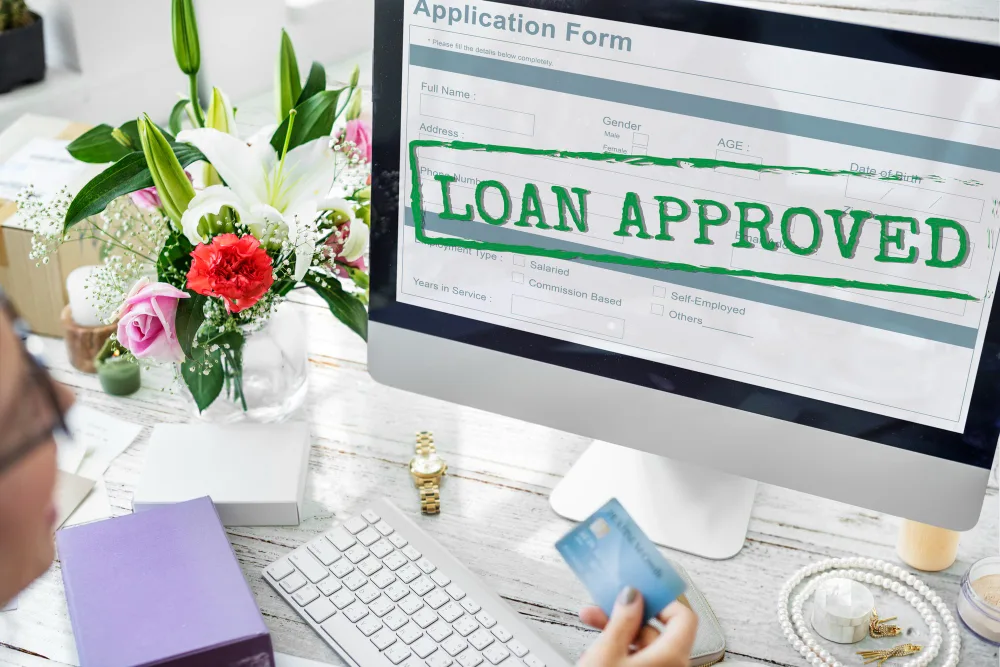Financial hardship can affect anyone with unexpected expenses, job loss, or medical issues. To support residents during such times, the Georgia Financial Hardship Loan Program offers crucial assistance. As Georgia ranks 7th in the U.S. for household debt, with the average credit card debt reaching $7,200 per household, this program is especially important. It serves as a key resource for individuals and families seeking financial stability.
In 2025, the Georgia Department of Community Affairs (DCA) expanded eligibility for hardship assistance by 15%, and new state legislation passed in March 2025 offers more protections for loan applicants. Many post-pandemic financial recovery programs have also been extended through December 2025, providing a continued safety net for those in need.
Understanding Georgia’s Financial Hardship Loan Programs in 2025
The residents of Georgia can apply to a financial hardship loan program, which helps cover costs in case of sudden job loss, medical crisis, or other situations that cause financial instability. Unlike regular loans, these programs consider your circumstances more than your credit score. The goal is to support you in meeting essential needs without relying on high-interest debt.
They are the ones that give you the choice of lower rates or payments over time and get you to gain control over finances and guidance in Georgia. For expert assistance with tax-related financial hardship, visit our Tax Resolution Services page.
What Makes These Programs Unique?
- Story-Based Acceptance: Such programs do not consider your credit score alone but rather the cause of your problem.
- Flexible Terms: Lower interest rates, deferred payments, and sometimes grants instead of loans.
- Temporary Bridge: Designed to help you recover and avoid deeper debt.
State-Sponsored Financial Assistance Programs in Georgia
Georgia is a state with a number of state-provided programs to enable residents to face financial strain:
- Georgia Mortgage Assistance Program: The program provides a grant of a maximum of $50,000 to under-mortgaged homeowners who have suffered economic damage due to the pandemic.
- Emergency Solutions Grants (ESG): It supports those who are at risk of homelessness with emergency shelter, outreach, and rapid re-housing
- State Small Business Credit Initiative (SSBCI): It offers loan guarantees and gap financing for small businesses facing hardship.
- Temporary Assistance for Needy Families (TANF): Monthly cash assistance for low-income families with children.
- Georgia Rental Assistance Program: This program will offer a maximum of 12 months of COVID-19 related payments based on estimates of rent and utility expenses.
- Healthcare Workforce Loan Repayment Programs: It is for healthcare professionals working in rural or underserved venues.
Additional State and Federal Programs
- Peach Care for Kids: Low-cost or free health insurance for children up to age 19.
- Childcare and Parent Services (CAPS): Helps low-income families afford quality childcare.
- SNAP (Food Stamps): Nutritional support for low-income families.
- LIHEAP: Assistance with home energy bills.
Eligibility Requirements for Georgia Hardship Loans
Eligibility varies by program, but most require:
- Proof of Georgia residency.
- Documentation of financial hardship (job loss, medical bills, etc.).
- Income below a set threshold (usually 100–150% of Area Median Income).
- Primary residence in Georgia.
- No active bankruptcy or recent mortgage-related crime.
| Requirement | Mortgage Assistance Program | Emergency Solutions Grants (ESG) |
| Residency | Must own and live in a GA home | Must be a GA resident |
| Hardship Cause | Pandemic-related after January 2020 | At risk of or experiencing homelessness |
| Income Limit | ≤100% AMI (150% if disadvantaged) | Varies by provider |
| Documentation | ID, tax returns, mortgage, affidavit | Proof of income, residency, and housing status |
Misconception: You don’t need perfect credit to qualify. These programs are for people already facing financial challenges.
Credit Card Hardship Programs for Georgia Residents in 2025
A credit card hardship program can help you manage debt if you’re struggling to make payments. Most major issuers, like Chase and American Express, offer these programs, even though they may not promote them. They may lower your interest rate, waive fees, or reduce your monthly payment, making your debt more manageable until you recover.
Benefits of Credit Card Hardship Programs
- Reduced interest rates,
- Waived late fees.
- Lower monthly payments.
- Possible payment pauses.
Who Qualifies?
If you’re struggling to pay your credit card bills due to a job loss, medical issue, or other serious financial problem, you might be eligible for a hardship program. Most lenders require documented proof of your hardship, such as a job termination letter, medical bills, or financial statements.
How to Negotiate with Credit Card Companies
Follow these steps to request hardship help:
- Gather Documents: Collect proof of hardship (termination letter, medical bills, pay stubs).
- Know Your Budget: Determine what you can afford to pay each month.
- Call Your Creditor: Ask to discuss hardship options.
- Explain Clearly: State your situation calmly and factually.
- Confirm Terms: Get all agreements in writing and ask about program duration, account status, and credit impact.
Expert Tip: Laura Sterling, vice president of marketing for Georgia’s Own Credit Union, recommends asking, “How long does the program last? Will my account be frozen? How will this affect my credit score?”
Temporary vs. Permanent Credit Card Relief
| Feature | Temporary Relief (Forbearance) | Long-Term Solution (Debt Management Plan) |
| Goal | Short-term breathing room | Structured payoff over the years |
| How it Works | Payments paused/reduced | Consolidated payment, lower interest |
| Credit Impact | Temporary dip, less severe | Account closed, improves with time |
| Best For | Short-term setbacks | Serious, ongoing financial issues |
Temporary relief is best for short-term setbacks, while long-term solutions like debt management plans are for more serious, ongoing financial issues.
Application Process for Georgia Financial Hardship Programs in 2025
Applying for a Georgia financial hardship loan program is easier if you’re prepared. Most programs, like those from the Department of Community Affairs, offer online applications.
Step-by-Step Application Guide
- Identify the Right Program: Look up available programs and find the right one that will suit what you need
- Gather Required Documents: Obtain all the paperwork that is required before initiating the application.
- Complete the Application Form: Fill out the application form in a proper and adequate manner.
- Write a Hardship Letter: Write in your plain terms your situation and how the help can be beneficial to you.
- Submit Your Application: The deadline is approaching, so copy all documents and keep them in your records.
- Follow-up: After a week or two, check up on your application status.
Common Documents Needed
- Government-issued ID
- Proof of Georgia residency
- Proof of income (pay stubs, tax returns)
- Bank statements.
- Hardship documentation (medical bills, termination letters).
- Mortgage or rental documents.
- Signed hardship affidavit.
Common Reasons for Application Rejection
- Incomplete application: Re-check to make sure that you submitted.
- Missing documents: Make use of a checklist to make sure that you are complete.
- Income too high: Income limits; some put into effect at the time of distress.
- Insufficient proof of hardship: Be specific and give documentation.
Tip: If rejected, ask if you can correct and resubmit the form or provide additional documentation.
How Georgia Financial Hardship Loans Affect Your Credit
Enrolling in a Georgia financial hardship loan program may temporarily lower your credit score, but it’s usually less damaging than missing payments or defaulting. Lenders see hardship plans as a responsible way to manage debt.
For more information about credit impact and tax solutions, visit our Tax Relief Services.
| Action | Credit Score Impact | Lender View |
| Enrolling in the Hardship Program | Minimal to moderate dip | Generally positive |
| Missing Payments | Significant negative impact | Negative |
| Account Sent to Collections | Major negative, lasts 7 yrs | Very negative |
| Debt Settlement | Severe negative mark | Negative |
Credit Reporting for Hardship Programs
Creditors will likely add a “hardship” note to your credit report with Equifax, Experian, or TransUnion. This is temporary and less harmful than late payments. As you make on-time payments after the program, your score can recover.
Note: The notation is temporary, and its impact will fade over time as you demonstrate a pattern of on-time payments after the program ends.
Alternatives to Georgia Financial Hardship Loan Programs
If a Georgia financial hardship loan program isn’t right for you, consider these Georgia debt relief options:
- Non-Profit Credit Counselling: Non-Profit Credit Counselling: FTC It is free or low-cost budget counseling and creditor negotiations.
- Debt Management Plans (DMPs): Consolidate unsecured debts into one payment, often with lower interest.
- Debt Consolidation Loans: This is borrowing to pay off several debts and then taking on one debt instead, with a cheaper interest rate.
- Debt Settlement: Bargain with lenders and pay less than what you owe, but it would affect your credit rating.
- Bankruptcy: A final solution for people who cannot make payments of debts and with lasting credit repercussions.
- Federal Relief Programs: SNAP, LIHEAP, and unemployment benefits may assist with living expenses.
Debt Management and Credit Counselling in Georgia
Reputable agencies can assist you with:
- Money Fit: Offers debt consolidation and credit counseling services for Georgians.
- InCharge Debt Solutions: Nonprofit service that consolidates debt and creates affordable payment plans.
- Consumer Credit Counselling Service of the Savannah Area: Provides budgeting, debt management, and financial education.
- GreenPath Financial Wellness: National nonprofit with services in Georgia.
These organizations help with budgeting, debt management, and financial education and can often negotiate lower interest rates with creditors.
Federal Relief Programs for Georgia Residents
- SNAP: Food assistance for low-income families.
- LIHEAP: Help with home energy bills.
- Unemployment Benefits: Temporary support if you lose your job.
- TANF: Direct cash assistance for families in need.
- Healthcare Workforce Loan Repayment: For healthcare professionals serving in rural or underserved areas.
Success Stories: Georgia Residents Overcoming Hardship
The Miller Family, Atlanta: They fell behind on their mortgage due to job loss, but thanks to the Georgia Mortgage Assistance Program, they were able to make up for all the missed payments, and they were able to keep their family home.
David, Savannah: As a freelancer, David’s income dropped suddenly. He called his credit card companies and enrolled in a credit card hardship program, lowering his payments until he found new clients.
Key Lessons:
- Act quickly when you anticipate trouble.
- Have your documents organized.
- Speak effectively and honestly.
- There is nothing wrong with going to a professional.
Combining Credit Card and State Assistance
At the same time, you may avail yourself of a Georgia financial hardship loan program to cover your mortgage expenses and a credit card hardship program to take care of your unsecured debt. This would ensure that you reduce your financial burden and recover financially in a shorter time. To achieve the best outcome, understand all your applications and agreements.
The Role of Professional Assistance
Navigating these programs can be complex, as they often involve detailed rules, strict deadlines, and extensive documentation requirements. Professionals like Halls IRS can help you identify the right programs, prepare your application, and negotiate with creditors. Their expertise can make the process smoother and improve your chances of approval.
Conclusion:
A Georgia financial hardship loan program and related options are valuable tools for getting back on your feet. From state mortgage help to a credit card hardship program, Georgia residents have many ways to regain financial stability.
Start by researching your options, gathering your documents, and reaching out for help. For expert guidance, contact Tina Hall and the team at Halls IRS at (478) 455–4615 or visit 314 Old Nunez Rd, Swainsboro, GA 30401.
FAQ's
You should be a resident of Georgia, prove that you are in need, and satisfy the income and documentation requirements. All the programs have certain criteria
Yes, but the latter is available in most major issuers. The creditors determine eligibility.
The brief reprieve offered by a credit card is usually a few months to a year; mortgages in the state are a one-time grant; the repayment of the debt plan is three to five years.
In case the debt is shared, both credit reports will be affected. In the case where it is registered under your name alone, the credit of your spouse stands unaffected.
Your account again becomes regularized. To be able to have a budget and plan the termination of assistance so as to have stability.








